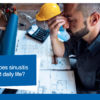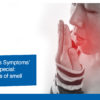Tips to reduce sinus pain
The sinus walls are sensitive to pain. Irritation of the walls and / or pressure change within the sinus causes pain. Blowing the nose, coughing and sneezing change the pressure within the sinus, causing pain. The research studies concluded that the mucosa lining the ostia of the sinuses is the most sensitive to pain. Swollen membrane of the ostia prevents air from entering into the sinus, causing pain. However, the mucosal cavity within the paranasal sinuses is not pain-sensitive.
After sinus surgery, pain may also occur. However, the surgeon will prescribe medication for resolving the pain. If medication does not help, consult the doctor at the earliest. In some cases, lying-down causes pain, because the body position affects the drainage ability of the sinus. Bending changes the pressure, causing the pain. Position-dependent pain can thus be resolved by changing the position. Generally, sinus pain is secondary to the congestion of the turbinates and / or nasal mucosa. Pain intensity is the highest over the affected sinus.
Since teeth roots are located close to the paranasal sinuses, it is not easy to distinguish between pains of odontalgic and sinus origin. A careful examination and some extra tests are required. For instance, a bilateral pain would be due to problems of the frontal sinus, especially, when upright sitting posture improves the pain. The unilateral pain that relieves in recumbent position is likely due to maxillary sinus disorders. If physical examination does not help in distinguishing between dental and sinus pain, radiography will help in finding sinus condition and thereby the cause of pain.
The maxillary sinusitis may cause pain in maxillary teeth, gums and cheek. This sinus pain can be reduced by lying supine, lying down with face up. The temporal, supraorbital or periorbital pain will improve with keeping head upright.
Frontal pain associated with frontal sinusitis improves by keeping head upright. If patient lies down in supine position, the pain worsens in case of acute frontal sinusitis.
The pain behind the nose, pain in inner canthal region and temporal, retro-orbital and periorbital pain due to ethmoid sinusitis also reduce by keeping head upright.
Sphenoid sinusitis causes temporal, frontal, occipital and retro-orbital pain and pain in vertex. Keep head upright to resolve this sinus pain.
Facial massage may relive sinus pain.
Treat swelling of the nose lining.







